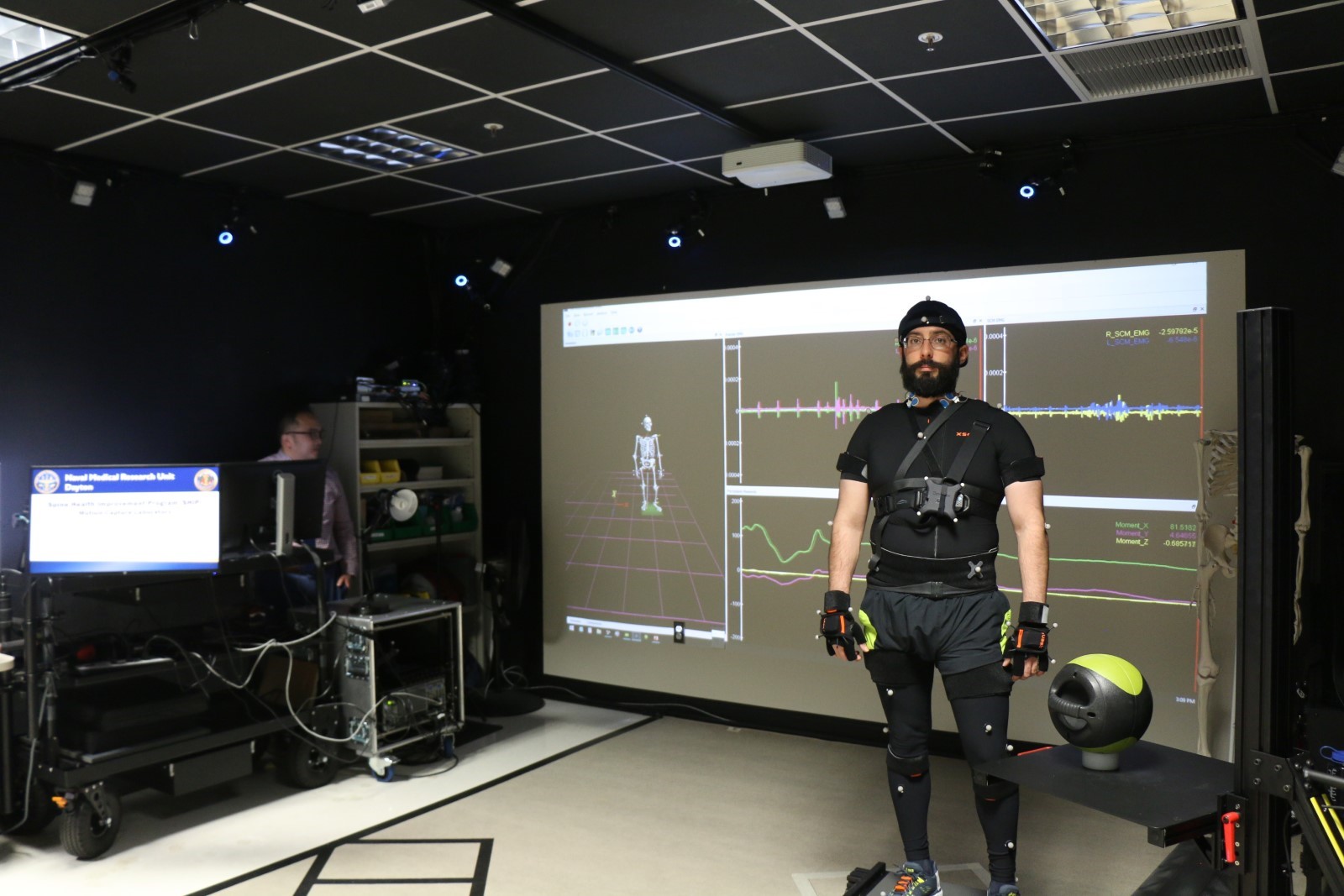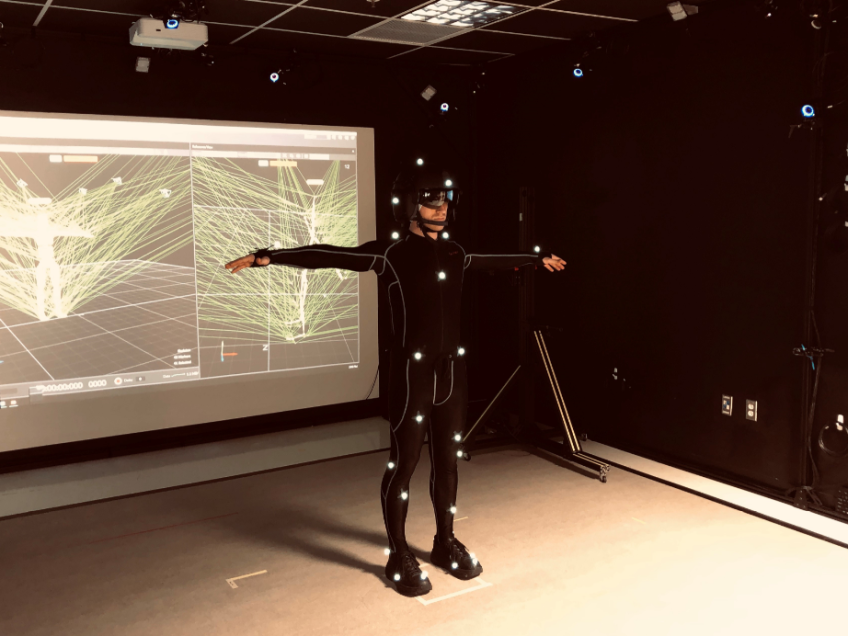At the intersection of innovation and rehabilitation, the MOSSD (Measurement of Spinal Structure Dynamics) initiative yields valuable contributions to military health, research capabilities, and workforce development in Ohio. This impact, supported by the Ohio Federal Research Network (OFRN), extends well beyond the project's initial scope, with achievements spanning from new technologies and research findings to a dedicated lab at NAMRU-Dayton.
Recent Achievements and Progress
Since MOSSD concluded in 2019, researchers have achieved significant milestones, especially in collaborative research. A 2018 OFRN award to The Ohio State University (Ohio State) enabled further exploration into spine health, sparking partnerships across military, academia, and industry, and leading to more than $5 million in new research grants. This funding has supported the creation of new jobs in Ohio and opened a wave of student opportunities in this vital field.
“The impact has been significant not only in terms of research,” said Rick Arnold, Director of the Naval Aerospace Medical Research Laboratory (NAMRL) at the Naval Medical Research Unit (NAMRU) Dayton on Wright-Patterson Air Force Base, “but also in fostering a workforce skilled in specialized areas of military health.”

Groundbreaking Research in Spinal Health
One of the most notable outcomes of MOSSD’s influence is the development of advanced methods to study neck and back pain—a prevalent issue among aviation personnel subjected to high forces and cockpit vibration. Research initiatives have investigated the impact of cockpit posture on muscle strain and spine health, with far-reaching implications for recovery and performance in physically demanding roles.
Arnold's team has expanded these studies, focusing on whole-body vibration and its effects on spinal health and recovery.
“Our work is unique in that we’re studying whole-body vibration specifically on aircrew health and on patients during air transport,” said Arnold. “This helps us understand how vibrations impact not only the body but also the stability of onboard medical equipment.”
The lab’s accomplishments have also paved the way for collaborations with Ohio State University’s Spine Institute, as well as resulted in Small Business Innovation Research (SBIR) awards and applications in general medical practice that enhance the lab’s capabilities for military health research.
The New Lab at NAMRU-Dayton: Pioneering Whole-Body Vibration Studies
The establishment of a specialized lab at NAMRU-Dayton is a direct result of these continued research efforts and OFRN funding support. Focusing on the effects of whole-body vibration on neck and back pain, the lab addresses critical concerns for military and civilian populations. This new research environment, integrated with Ohio State’s Aeromedical Lab, stands as a leader in studying whole-body vibration—critical for aircrew health and transport medicine.
In this facility, Ohio State’s technological innovations, such as the CLMM (Compact Laser Motion Monitor), originally developed under the MOSSD project, have evolved significantly. This device assesses spine motion and recovery by detecting non-normal movement patterns, offering a detailed, real-time analysis of recovery and rehabilitation.
“The CLMM’s development has revolutionized how we evaluate spine function and recovery,” Arnold said, “allowing us to assess range of motion and quality and abnormal patterns, which can be critical for ensuring personnel are ready to return to flight duties.”

Growth in Collaboration and Workforce Development
MOSSD’s legacy has not only bolstered research outputs but has also led to growth in the NAMRU-Dayton team. The lab's integration with other research groups brings additional strength, creating collaborative efforts across aeromedical and musculoskeletal health research.
“The collaborations are invaluable," said Arnold, "as we’re now positioned to lead studies that address real-world challenges in military health."
Empowering the Next Generation of Innovators
Student engagement has been a cornerstone of the MOSSD initiative, and the NAMRU-Dayton lab continues this focus by providing students with hands-on research experience. The lab has fostered talent through internships and research roles, creating a pathway for Ohio students into medical and biomechanics fields. This alignment with educational goals has transformed student innovation into tangible solutions for military health challenges, while contributing to Ohio’s broader workforce and innovation ecosystem.
Future Directions and Long-Term Vision
The lab aims to broaden its research on the impacts of vibration on patient health during air transport, an area critical for both military and civilian health. Researchers are also exploring how whole-body vibration affects medical equipment capabilities. The team is particularly excited to lead in this area of whole-body vibration research, a first for the NAMRU-Dayton Lab.
“This work is opening new avenues for us,” Arnold said, “and we’re especially excited to tackle these challenges as we broaden our focus to include patient transport impacts.”
Vision for Lasting Collaboration
The collaboration between NAMRU-Dayton and Ohio State University embodies a long-term commitment to research and development that not only addresses military health challenges but also strengthens Ohio’s role in the national defense research landscape. By fostering workforce development, supporting technology transfer, and enabling new research initiatives, the partnership aims to cement Ohio’s reputation as a hub for innovation and collaboration in military and medical technology.
Community Impact and Workforce Contribution
The establishment of NAMRU-Dayton’s new lab and the MOSSD project’s outcomes have contributed to Ohio’s innovation economy by generating specialized jobs and new educational opportunities. With support from OFRN and sustained engagement with academic and industry partners, these advancements will continue to boost Ohio’s workforce in specialized research and innovation.
In essence, MOSSD’s legacy has gone far beyond its initial goals, shaping future where advanced spine health research supports both military and civilian sectors. Through these efforts, NAMRU-Dayton stands at the forefront of transforming research into real-world relief, ensuring that Ohio remains a leader in groundbreaking, collaborative research for military and medical advancement.
###
About Parallax Advanced Research & The Ohio Aerospace Institute
Parallax Advanced Research is a 501(c)(3) private nonprofit research institute that tackles global challenges through strategic partnerships with government, industry, and academia. It accelerates innovation, addresses critical global issues, and develops groundbreaking ideas with its partners. With offices in Ohio and Virginia, Parallax aims to deliver new solutions and speed them to market. In 2023, Parallax and the Ohio Aerospace Institute formed a collaborative affiliation to drive innovation and technological advancements in Ohio and for the nation. The Ohio Aerospace Institute plays a pivotal role in advancing the aerospace industry in Ohio and the nation by fostering collaborations between universities, aerospace industries, and government organizations, and managing aerospace research, education, and workforce development projects. More information on both organizations can be found at Parallax and OAI websites.
About the Ohio Federal Research Network
The Ohio Federal Research Network has the mission to stimulate Ohio’s innovation economy by building statewide university-industry research collaborations that meet the requirements of Ohio’s federal laboratories, resulting in the creation of technologies that drive job growth for the State of Ohio. The OFRN is a program managed by Parallax Advanced Research in collaboration with The Ohio State University and is funded by the Ohio Department of Higher Education.




